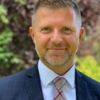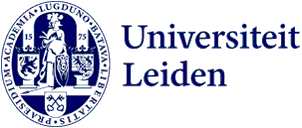714 search results for “james webb space telescope” in the Public website
-
Beyond the Safe Space: LUGO Podcast Miniseries
These podcast episodes were written for the Green Office’s Spring Podcast competition and miniseries 'Beyond the Safe Space', on the theme: the Planetary Boundaries, which took place between the months of March-May 2023.
-
Education highlights 2023
From educational adventures in the tropics, students building software for real customers, to bacteria that degrade plastics. Scroll through our highlights on educational innovation and the achievements of our students.
-
Science and society Faculty of Science Leiden
We also conduct research to make meaningful contributions to society. For instance, by talking about our research, contributing to community projects or by inviting people to help us with our research. Scroll down and discover how Science and Society can mutually reinforce each other.
-
National space legislation : future perspectives for Malaysian Space Law
This research studies the future perspectives for Malaysian space law. It aims at demonstrating the development of Malaysian outer space activities inclusive of her status with respect to United Nations space conventions and her membership of international and regional space-related organizations.
-
Extension of Operators on Pre-Riesz Spaces
This thesis mainly extends the theory of positive operators on Riesz spaces to a setting of pre-Riesz spaces.
- Lancering James Webb Telescoop Event
-
Study Rooms/Spaces
University Library, Witte Singel 27, 2311 BG, Leiden
-
 Steven Truxal
Steven TruxalFaculteit Rechtsgeleerdheid
s.j.truxal@law.leidenuniv.nl | +31 71 527 7725
-
Positive representations on ordered Banach spaces
Promotor: A. Doelman, Co-promotor: M.F.E. de Jeu
-
ESO instrument METIS passes important design milestone
The METIS instrument that’s being built for ESO's future Extremely Large Telescope (ELT) in Northern Chile under the leadership of the Dutch Research School for Astronomy (NOVA) has reached an important milestone: the preliminary design has been approved.
-
What do PAHs do in space?
Xander Tielens, Professor of Physics and Chemistry of the Interstellar Space, has been awarded an ERC Advanced Grant to study polycyclic aromatic hydrocarbons (PAHs) in space. The combination of astronomical observations, computer models and lab research makes the research highly interdisciplinary.
-
Library Telescope
BplusC Libraries and Old Observatory Leiden working together to provide telescopes
-
Semigroups on Spaces of Measures
Promotor: S.M. Verduyn Lunel, Co-promotor: S.C. Hille
-
Disruptive Conflicts in Computopic Space
Can you imagine a radically different world? In our times dominated by neoliberal capitalism, we seem to lack not only viable alternatives, but also the capacity to envision anything outside of the status quo.
-
Security in Transnational Spaces
This book focuses on transnationalism as a key concept to evaluate how Europe responds to cross-border security challenges.
-
Metabolomic characteristics of Catharanthus roseus plants in time and space
Promotor: Prof.dr. R. Verpoorte, Co-promotores: Dr. Y.H.Choi, N.R. Mustafa
-
Start of construction of camera for European giant telescope
Leiden scientists will be working on the development of a camera for the European Extremely Large Telescope that is currently under construction. On 28 September the Netherlands Research School for Astronomy signed an agreement with the European Southern Observatory.
-
Air and Space Law (Advanced LL.M.)
Our Advanced Master Air and Space Law (LL.M.) combines public air law, private air law and space law from a European and an international perspective.
-
Spaces for Active Teaching and Learning (SALT)
Here you will find an overview of the Spaces for Active Teaching and Learning already implemented at Leiden University and LUMC. These rooms vary in size, location, material affordances, and technological affordances, and thus vary in the forms of pedagogy they best support. You can use this site as…
-
International Institute of Air and Space Law
The International Institute of Air and Space Law is one of the leading international academic research and teaching institutes in the world, specialising in legal and policy issues regarding aviation and space activities in the broadest sense of the word.
-
Night Spaces: Migration, Culture and Integration in Europe (NITE)
How are night spaces imagined, produced, experienced and narrated by migrant communities in Europe? This research project considers this question in eight European cities: Aarhus, Amsterdam, Berlin, Cork, Galway, Lisbon, London, Rotterdam. Authorities have historically wrestled with the issue of night-time…
-
Air and Space Law Advanced LL.M.
Are you thinking about studying Air and Space Law ? Learn more and watch the videos.
-
Shining Light on PAHs in Space
Polycyclic aromatic hydrocarbons (PAHs) are the most abundant class of organic compounds in space. The PAH field evolves from the constant interaction between experimentalists, theorists, modellers and observers. While laboratory research and quantum chemical calculations together set up the molecular…
-
Spaces and Support for Active Learning & Teaching
Within the Vision on Teaching and Learning, one of the 8 ambitions is Activating Teaching and Learning. With the support of the Vice-Deans and Vice-Rector, Hester Bijl, the Saltswat project is working on accelerating this ambition. What is the purpose of this site? Being effective…
-
Galaxy in the early Universe contains carbon after all
In 2015, Jorryt Matthee thought he discovered an extremely distant galaxy called CR7, which lacked elements heavier than helium. Three years later, he shows with measurements using the ALMA telescope that the galaxy does have carbon after all, and even in normal concentrations. The American Astronomical…
-
Geometric approach to evolution problems in metric spaces
Promotor: S.M. Verduyn Lunel, Co-promotor: O.W. van Gaans
-
Short stay living space in development
Leiden University is developing new short stay living space for foreign guests and employees. De Kloksteeg is currently the last of four projects that has been renovated by the Leiden University Real Estate directorate since 2017. The Service Centre International Staff (SCIS) is responsible for rental…
-
Design METIS instrument for the Extremely Large Telescope finalised
The design for the METIS instrument for the Extremely Large Telescope (ELT) is final. The European Southern Observatory (ESO) has given the green light for production of all parts of the instrument. It is the first ELT instrument, designed and to be built under Dutch leadership, to formally pass the…
-
Single-molecule fluorescence in sequence space
The sequence-dependence of biomolecular interactions involving nucleic acids and proteins is essential for numerous processes inside the cell. Insights into the underlying molecular mechanisms have been obtained using various biochemical and biophysical methods on two different levels — bulk and sin…
-
120-year-old telescope back after maintenence
After a period of maintenance, the 'Photographer' telescope is available once again for visits at the Old Observatory.
-
120-year-old telescope back after maintenence
After a period of maintenance, the 'Photographer' telescope is available once again for visits at the Old Observatory.
-
Andrew Webb receives 2017 Simon Stevin Master Prize
Andrew Webb, Professor of MRI Physics at LUMC and teacher at the Physics education at Leiden University, has been awarded the 2017 NWO Simon Stevin Master Prize. The prize includes a cash award of 500,000 euros. Webb is planning to use the prize to develop new MRI techniques that allow diseases to be…
-
Laboratory studies of Water Ice in Space
Astronomical observations of cold regions in the universe show a rich inventory of ices. Part of these ices may end up on planets like our own, but in that journey they will be exposed to considerable amounts of radiation.
-
Andrew Webb wins Huibregtsen Prize for portable MRI scanner
Professor of Radiology Andrew Webb and his collaborative partner Johnes Obungoloch from Uganda have won the 2023 Huibregtsen Prize.
-
Tautological differential forms on moduli spaces of curves
In this thesis we study the moduli space of genus g curves, and the differential forms that occur naturally on this moduli space.
-
Evaluation of Different Design Space Description Methods for Analysing Combustion Engine Operation Limits
Promotor: Prof.dr. T.H.W. Bäck
-
The Hague International Space Resources Governance Working Group
The development of space resource activities is happening now. In the absence of a clear framework to govern these activities, there is a need to examine the concepts that are being discussed in order to ensure that they meet existing treaty obligations regarding on-orbit operations and space resource…
-
Group representations in Banach spaces and Banach lattices
Promotor: S.M. Verduyn Lunel, Co-promotores: M.F.E. de Jeu, B. de Pagter
-
Silicon pore optics for high-energy optical systems
This thesis examines silicon pore optics (SPO), a technology that exploits silicon wafers from the semiconductor industry to create extremely high quality X-ray optics, by studying its manufacturing process, applications, and prospects.
-
International Institute of Air and Space Law PhD Track
The International Institute of Air and Space Law (IIASL) offers PhD candidates the possibility to enroll in the IIASL PhD Track. It is designed for 'external' PhD candidates (buitenpromovendi), who seek to pursue a PhD in Air Law or Space Law while honouring their professional commitments in paralle…
-
Urban Space and Urban History in the Roman World
This volume investigates how urban growth and prosperity transformed the cities of the Roman Mediterranean in the last centuries BCE and the first centuries CE, integrating debates about Roman urban space with discourse on Roman urban history.
-
Four Vici grants for Leiden University researchers
Four researchers from Leiden University have been awarded prestigious Vici grants the Dutch Research Council (NWO) has announced. The honoured applications are from researchers at the Faculty of Social and Behavioural Sciences, Leiden Observatory, the LUMC and the Faculty of Archaeology.
-
Cyber Governance and National Security: Intervening in Ungoverned Spaces
The Netherlands Ministry of Defense and Ministry of Security and Justice have requested the Centre for Terrorism and Counterterrorism to complete a research project on cyber governance from a policy perspective. The results of this project will contribute to the deliverables of the fourth International…
-
Probing new physics in the laboratory and in space
The Standard Model (SM) of particle physics fails to explain several observed phenomena and is incomplete. In order to resolve this problem, one may extend the SM by adding new particles.
-
Approach to Markov Operators on Spaces of Measures by means of equicontinuity
The subject of this thesis, ‘Approach to Markov Operators on Spaces of Measures by Means of Equicontinuity’, combines an analytical and probabilistic approach to Markov operators.
-
Rare Mercury transit visible with Leiden telescope
On Monday 9 May Mercury will pass between the Earth and the Sun. This rare event can be followed in the Leiden Observatory. The Observatory's new solar telescope produces a very clear image and offers a unique opportunity to observe Mercury at the highest magnification possible in the Netherlands.
-
Refined tautological relations on moduli spaces of curves
Robin de Jong
-
(Re)Imagining Port Cities: Understanding Space, Society and Culture
Port cities develop at the intersection of international trade and commerce and at the interface between sea and land. What does the future of port cities look like with urbanization, sea level rise, new migrant flows and the disappearance of old industries? This is addressed in the minor (Re)Imagining…
-
Dutch ‘big data’ telescope finds exoplanets
Astronomers at Leiden University have discovered the first planets using a new instrument: the planet hunter MASCARA. This instrument, developed at Leiden Observatory, looks specifically for planet transitions around the brightest stars in the sky, which surprisingly enough have so far have hardly been…
-
 Danielle Chevalier
Danielle ChevalierFaculteit Rechtsgeleerdheid
d.a.m.chevalier@law.leidenuniv.nl | +31 71 527 1039
